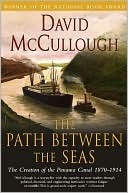More on this book
Community
Kindle Notes & Highlights
“that Bunau-Varilla is the authorized party to make treaties.”
but in actuality the written instructions for Bunau-Varilla being carried north from Colón were quite to the contrary.
Just seven days later, on November 18, 1903, came the signing of the Hay–Bunau-Varilla Treaty.
Morgan would serve as financial agent for the new republic.
For Roosevelt personally, Cuba had been an unforgettable lesson in the havoc disease could bring down on an expeditionary force.
The insect was not the source, in other words, only the agent of conveyance.
Carpenters were forbidden to saw boards over ten feet in length without a signed permit.
Indeed, to most new arrivals “the first surprise” of Panama was the “magnificence of the French failure.”
that was 30,000,000 cubic yards of Panama that no longer stood in the path of the canal, a volume equal to about a third of the excavation of the Suez Canal.
Of the 2,149 buildings left by the French, a total of 1,500 would be refurbished as time went on.
but the shovels could not operate at even a quarter of their theoretical efficiency because there were too few trains to haul the spoil away
Wallace was “distrustful” of the mosquito program.
If Wallace deemed himself essential to the enterprise, Taft now quite emphatically did not.
John Stevens, reflecting on the episode, would remark simply and without scorn that Wallace had had a “thorough case of fright.”
By November there were four thousand men working solely on Gorgas’ projects.
If you back up Gorgas and his ideas and let him pursue his campaign against the mosquitoes, you will get your canal.”
The eradication of yellow fever at Havana had taken eight months. At Panama it took nearly a year and a half.
Once Gorgas’ program was under way, incidence of yellow fever fell off with the same dramatic suddenness as at Havana.
Indeed, the building of the Panama Canal was among other things one of the greatest of all triumphs in American railroad engineering.
Whereas Ferdinand de Lesseps had failed to see the project as fundamentally a railroad problem and neglected to send a single railroad specialist to Panama, Stevens never saw it as anything other than that, and he recruited railroad men only.
Stevens saw at once, as the French had not, that the Panama Railroad was the lifeline along which not only men, food, supplies, everything needed to sustain the work, would have to move freely and efficiently, but the Culebra dirt trains as well.
The track itself, to begin with, was too light. By his standards the railroad as it stood was a pathetic toy. Equipment on the Great Northern was four times the size of that used on the little jungle line.
What made the undertaking so exceptional was its overwhelming scale.
Stevens’ objective was to create a system of dirt trains that would function like a colossal conveyor belt,
By double-tracking the railroad he had provided open access in both directions without interrupting regular traffic on the line. The
Stevens had assumed that he would be building a sea-level canal.
The decision, by a margin of eight to five, was for a sea-level canal.
a canal that would not divide the land, but bridge it with a high-level lake reached by flights of locks at either end.
Yet in its essentials this latest high-level lake plan for Panama was no different from that proposed by Godin de Lépinay in Paris twenty-seven years before.
On February 5, in response to Stevens’ views, the Isthmian Canal Commission overrode the majority opinion of the advisory board and chose the lock canal.
Knox spoke on June 19. Two days later the Senate voted 36 to 31 for a lock canal.
when Glendower says, ‘I can call spirits from the vasty deep,’ and Hotspur answers, ‘So can I, and so can any man; but will they come?’ ”
The chain of command had thus become a straight line, from Roosevelt to Taft to Shonts to Stevens.
No President had ever before left the country during his time in office
He had picked November because it was the height of the rainy season. He wished to see Panama at its absolute worst,
He saw the Chagres surge a hundred yards beyond its banks.
and Roosevelt had Gorgas take him directly to Ancon Hospital for an inspection tour, two hours before he was expected.
It could take up five cubic yards—roughly eight tons of rock and earth—with a single scoop.
The area to be excavated was drilled and blasted, then the shovel moved up to begin the heavy work of swinging the debris, much of it rock, into the dirt cars.
The effort’s real.
its valiant persistence. . . .”
he praised Congress for having had the sense to refuse to attempt a passage at sea level.
Black laborers, those understood to be so ideally suited to withstand the poisonous climate, were dying three times as fast as the white workers.
Roosevelt noted “the extraordinary absence of mosquitoes.”
But excavation was only beginning in early 1907 and Stevens had not been confronted by major landslides.
All the complex details of the locks had yet to be designed.
the test was in the capacity to keep “pegging away,” as he often stressed to his sons.
In Roosevelt’s long essay on the canal in his Autobiography, there would be no mention of John Stevens.
The canal commission was again to be reorganized and for the final time. Goethals was to be both chairman and chief engineer.
Colonel Goethals here is to be chairman. He is to have complete authority. If at any time you do not agree with his policies, do not bother to tell me about it—your disagreement with him will constitute your resignation.”


